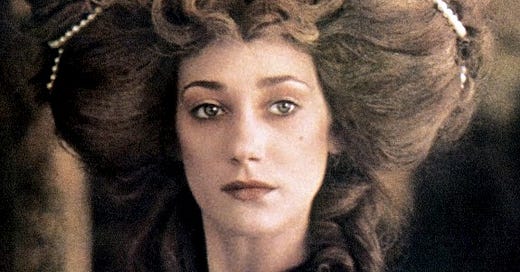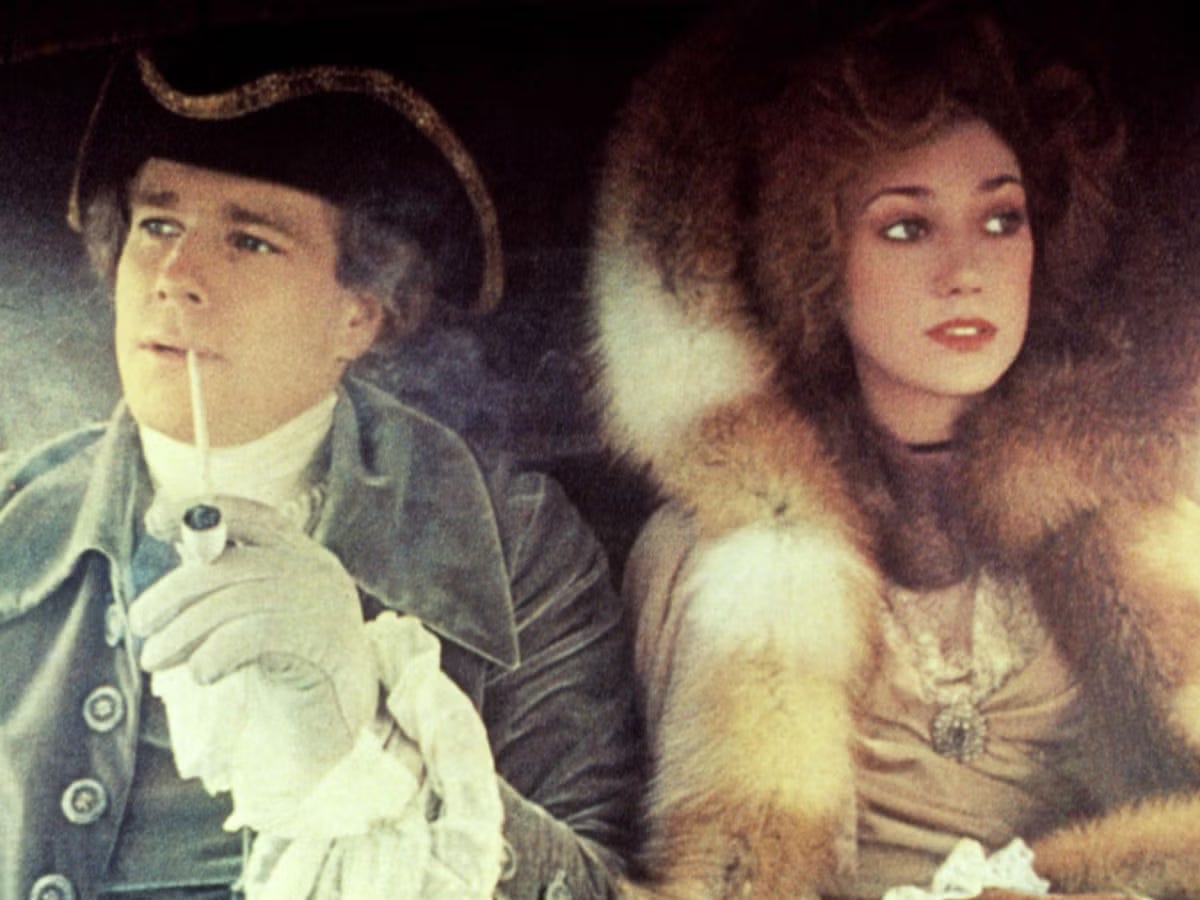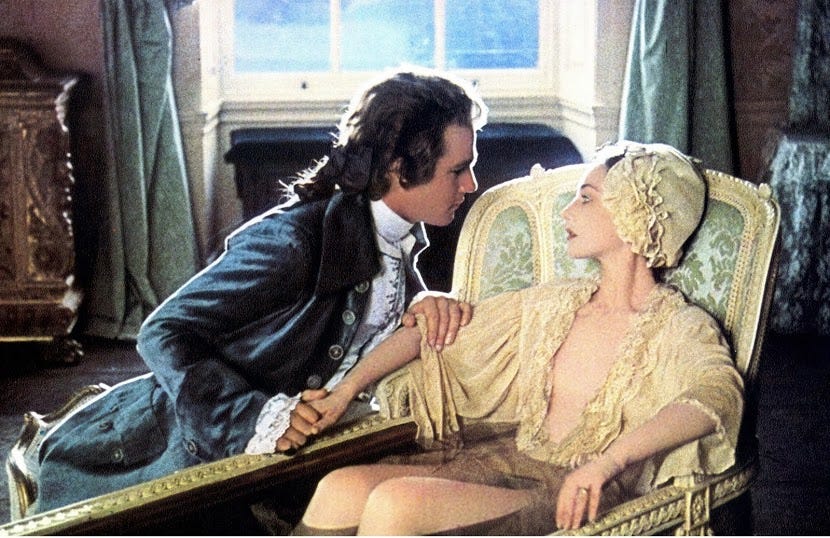I was inspired, myself, by the latest post from the superb
… which made mention of the 1844 Thackeray novel, The Luck of Barry Lyndon. Later, of course, a sumptuous slice of Stanley Kubrick. Was ever a woman more exquisite than Marisa Berenson in that 1975 film?She plays the Countess of Lyndon, whose great misfortune it is to take Redmond Barry (Ryan O’Neal) as her husband. In my Heiresses book - which does contain some amazing tales (and I take no credit for it, they just are) - I tell the true story of that marriage, which Thackeray had learned through a Cambridge friend, John Bowes.
Bowes was the illegitimate son of the 10th Earl of Strathmore (thus, incidentally, an ancestor of King Charles, whose maternal grandmother - Elizabeth Bowes-Lyon - was a Strathmore.) He could not inherit the title (blanket, wrong side) but he owned the family’s English estates, including a castle in Co. Durham and many thousands of acres in Yorkshire, which had come to him from his grandmother, Mary Bowes. She became the model for Thackeray’s Countess of Lyndon in what would be his second novel, a picaresque adventure whose tone somewhat lightens the ghastly realities.
I have written in previous Heiresses posts about the grave dangers of being a rich woman, especially so in a society that offered them scant legal protection.
Here (slightly edited from my book) is a supreme example of that, in the form of the real-life Barry Lyndon story.
Mary Bowes had no need what ever to wreck her own life. She had every possible advantage— not just money— which makes her story all the more frustrating and perturbing. She was born in 1749, heiress to a coal magnate, and at the age of eighteen married the 9th Earl of Strathmore, who in the familiar British way (making a polite little bow to female financial dominance) took her surname as well as her wealth. She had both looks and learning, indeed she was a Blue Stocking: an amateur botanist, a linguist, a patron. However, learning does not immunize a person from silliness. A contemporary source wrote that Mary’s “judgment was weak, her prudence almost none, and her prejudice unbounded,” and her house on Grosvenor Square was called a “Temple of Folly,” filled with self-styled artists smarming their way toward handouts. For all her education, she was susceptible to a plausible man.
At the age of twenty-seven, by then a mother of five, she was widowed and inherited the title of “richest woman in the country.” Among the many suitors who began to buzz and hum around her was an Anglo-Irish officer, a couple of years her senior, named Andrew Robinson Stoney: the model for Barry Lyndon.
Keep reading with a 7-day free trial
Subscribe to Laura Thompson’s Substack to keep reading this post and get 7 days of free access to the full post archives.






